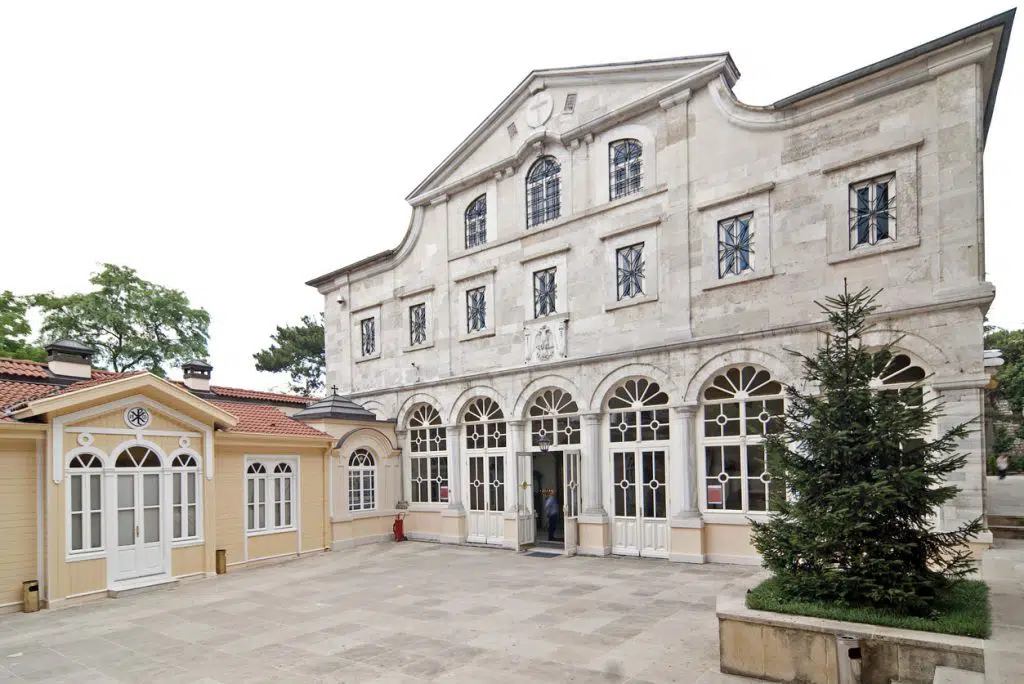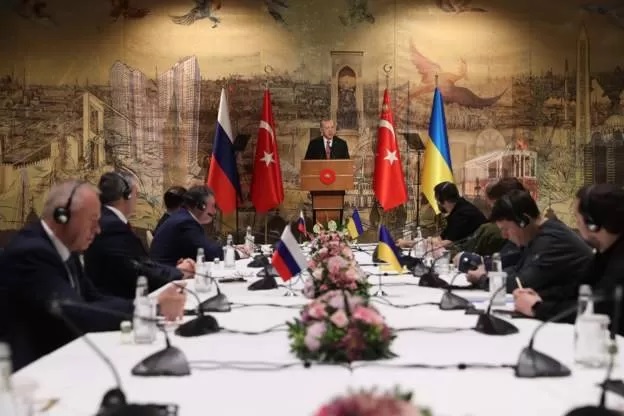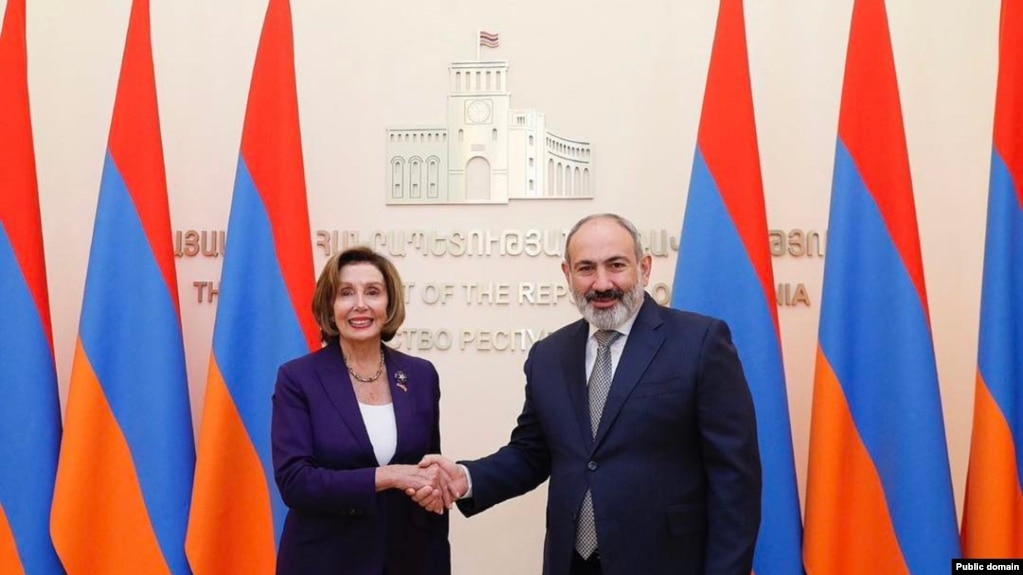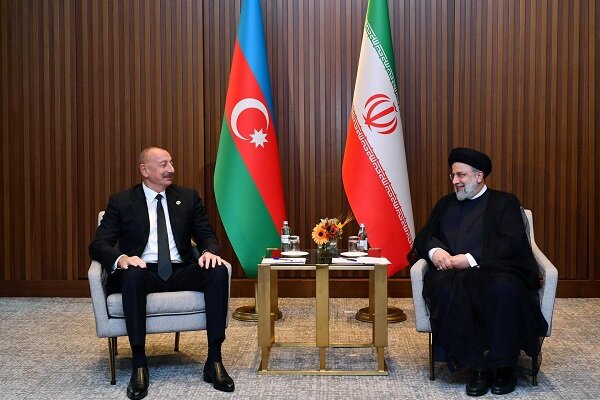
The Fener Greek Patriarchate has garnered attention due to its various activities that deviate from the scope of authority granted by the Republic of Türkiye and its attempts to assume a status that is not recognized by Türkiye. From Türkiye’s perspective, the Patriarchate is a Turkish institution, subject to the laws of the Republic of Türkiye, and is allowed to remain on Turkish soil only to fulfill the religious needs of the Orthodox Greek (Rum in Turkish, a term associated with but different from “Greek”) minority. Within this framework, the Patriarchate performs its duties with the rights and powers of an ordinary church. What determines the legal status of the Fener Greek Patriarchate is the legal system of the state in which it is located. In other words, even if there was a different granted authority or status during the Ottoman State (Empire) era, the Patriarchate’s powers and status would carry over only as far as the Republic of Türkiye would recognize them. Although the powers granted by the Ottoman State would be retained, these powers would only be within the extent of ensuring that the religious needs of the Greek Orthodox community within the Republic of Türkiye are addressed. The relationship between a state and the institution of that state exists in accordance with basic legal logic. In fact, the legal status of the Patriarchate within the Ottoman State or the Eastern Roman Empire was regulated by the same legal logic, and the Patriarchate continued to exist as an institution of that state within the boundaries and position permitted by the relevant state.
The opening of the Serbian Orthodox Patriarchate in the city of İpek (Peć/Peja, Kosovo) in the Ottoman State with the efforts of Sokollu Mehmed Pasha during the reign of Suleiman I (Suleiman the Magnificent) in 1557, its closure in 1766,[1] the establishment of an autonomous Serbian Church in 1832, and the establishment of the Bulgarian Exarchate by the edict of 28 February 1870 in the reign of Sultan Abdulaziz were also state practices. After the conquest of Antakya (Antioch), Jerusalem, and Alexandria by Selim I (Selim the Resolute) in 1516, the joining of the churches in these towns that accepted Ottoman rule to the Orthodox Greek Patriarchate in Istanbul was also a state practice. On 20 October 1884, the Ottoman State redefined the jurisdiction of the Greek Patriarchate in Istanbul and ended its jurisdiction over the eastern churches[2] to preserve the autonomy of the churches of Antakya, Jerusalem, and Alexandria, which the Patriarchate had been oppressing. This was also a state practice. As a matter of fact, the title of the Greek Orthodox Patriarchate of Istanbul was changed to the Greek Patriarchate of Istanbul through this decision. Thus, leaving aside the recognition of the status of “ecumenical”, the removal of the Bulgarian and Arab Orthodox people within the borders of the country from the jurisdiction of the Greek Patriarchate became a subject of discussion, as these people complained about being subject to repression and assimilation by Serbs and the Patriarchate. To be precise, the Church, which today is referred to as the Fener Greek Patriarchate, at no time in its history, has had any authority that exceeded the boundaries of the state in which it is located. Therefore, the adjective of ecumenical was not used to include this meaning.
The dictionary meaning of the word “ecumenical” is universality, or “universal unification”. It also has the meaning of religious unity, which is used in religious terminology. In terms of Christian Church Law, for a church to be considered ecumenical, including the meaning of being regarded as a center of religious propagation, and to have authority and a voice over other churches, it must be apostolic, that is, founded by an apostle of the Prophet Jesus. The first of the councils, where all Christian churches came together to clarify controversial issues related to Christianity, was the Ecumenical (General) Council of İznik of the year 325. In this Council, three churches (Rome, Antakya, Alexandria) established by the apostles of Jesus were designated as ecumenical (universal) churches. The Eastern Roman Emperor, who had attempted to implement the “one church, one state” principle and wanted to place religious movements under political control for this purpose. After the Emperor assembled the Istanbul Council in 381, he granted patriarchate status to the Episcopal Fener Church, deciding that it bore equal rights with the Patriarch of Rome. The Fener Church was an Episcopal affiliated to the Ereğli (Heraclea) Metropolitan area of the Patriarchate of Antakya. This status was confirmed at the Council of Kadikoy (Chalcedon) held in 451 and the Istanbul Metropolitan was granted authority over Thrace, Pontus, and churches of Asia Minor. The very first church schism occurred after the meeting in 381. This stemmed from other churches not wanting to recognize the patriarchy of the church in Istanbul due to its non-apostolic status.
In the understanding of the Orthodox Church, ecumenism represents the priority attributed to a church leader within the protocol. In this context, the Fener Greek Patriarchate is the primus inter pares (first among equals) due to the recognition of its ecumenical claim in the Eastern Orthodox world.[3] Again by referring to the Council of Kadiköy, the Orthodox churches regard the Patriarchate as the first/main church and other Orthodox churches are considered to have originated from this patriarchate. The Patriarchate can be regarded as being equal to the others, but at the same time is deemed worthy of special importance and authority. This is a situation related to the internal functioning of the Orthodox church. Its reflection in practice is displayed during the rituals commemorating the Churches and Patriarchates. The Fener Greek Patriarchate is commemorated in the first place during rituals.
Some Orthodox Churches, believing that the Fener Greek Patriarchate established a church outside its jurisdiction in Ukraine after linking a church to itself, have ceased to commemorate the Patriarchate in their rituals since 14 September 2018. In terms of understanding this current dispute, it should be emphasized that, in addition to protocols’ function to determine priority, another function of the protocols is sought to be restored. This Fener Greek Patriarchate itself acknowledges that the 14 autocephalous (independent), 2 autonomous, and one semi-autonomous church of the geographical region[4] that make up the Orthodox (Eastern) Church are equals, that there is no superior-subordinate relationship between them, and that “neither has the authority, nor say over the other”.[5] However, the Patriarchate faces significant opposition because of its claim that it has sovereignty, authority, or “the task of establishing an Orthodox Church in places outside the geographic borders where other patriarchs and archbishops have jurisdiction”.
The debate in the Orthodox world relates to the claim of sovereignty over the diaspora churches in Western Europe, America, and Australia. There are several reasons for objections to this issue in the Orthodox world. Firstly, the Fener Greek Church is the Church of the Greeks (Rumlar in Turkish) and has Greeks in its administration. In fact, Orthodox churches are -in essence- national churches. Every nation, every independent state has its own national church. A national church’s desire to assume leadership over the other national churches is not received favorably by the rest of the Orthodox world. Secondly, the 28th Rule of the 4th Council of the year 451 recognizes the jurisdiction of the Church of Istanbul (Fener Greek/Rum) as being only limited to the regions of Asia, Thrace, and Pontus. Accordingly, the Thrace region refers to parts of the territories of present-day Türkiye, Greece, and Bulgaria. Pontus refers to a region extending along the Black Sea until Trabzon. And Asia refers not to Anatolia in its entirety, but only the environs of Antalya and Efes (Ephesus). The rest of Anatolia is within the jurisdiction of the Patriarchate of Antakya/Antioch (the Patriarchate is presently situated in Damascus). The dispute between the churches itself is not a concern of Türkiye. However, the fact that the Fener Greek Patriarchate is establishing churches outside the territory of Türkiye does warrant Türkiye’s attention. The Patriarchate's conduct falls within the scope of political activities prohibited by the Treaty of Lausanne, and constitutes an action that may impede Türkiye’s foreign policy as a state.
On the other hand, it is necessary to keep in mind that the argument that the Patriarchate is the spiritual leader of 350 million Orthodox people and that it has carried the ecumenical title since the 6th century is not based on real data. Indeed, both claims are not true. The Orthodox people who accept the direct authority of the Patriarchate are the Greek diaspora spread throughout the world and the churches in the islands and northern parts that were subsequently connected to Greece.[6] This makes up about 1.3 per thousand of the Orthodox population, which is said to be 225-300 million in total. Following the joining of one of the churches in Ukraine to the Fener Greek Patriarchate, it may be necessary to add the congregation of this church in Ukraine and the diaspora to the figure above. The belief that Türkiye can increase its influence by way of the Patriarchate in the Orthodox world (as Mehmed II/Mehmed the Conqueror did in the Ottoman era) or that faith tourism can be revived may seem appealing, but they do not correspond with the real situation.
The claim that the Patriarchate and the Patriarch are the leaders of the entire Orthodox world (ecumenical/universal) requires three assumptions to be true. The first (all three being of equal importance) is the worldwide consent of the Orthodox people who will accept such leadership, the second is the acknowledgement by unwritten Christian law that the procedural rules of this matter have been abided by, and the third is the approval required from Türkiye that would allow the Fener Greek Patriarchate to wield such leadership authority. The first two are not matters of concern for Türkiye. However, the view that the first two requirements have been met and the condition of Türkiye’s approval of the leadership authority is the only this that is lacking is inaccurate. Moreover, a deliberate attempt is being made to create the perception that this authority was previously granted by the states in which the Patriarchate had existed before the establishment of the Republic of Türkiye.
In truth, during the eras of the Eastern Roman Empire and the Ottoman State, the Fener Greek Patriarchate was granted jurisdiction only within the territories of those countries. During the Eastern Roman Empire, the powers of the patriarchs were limited to religious affairs and they were prevented from interfering in world affairs. Before the rise of Ottoman control, the Bulgarian Patriarchate in Ohrid and Târnova (Ohri and Tırnova), the (Serbian) Patriarchate of Peć (İpek/Peja, Kosovo), and the Greek (Rum) Patriarchate in İstanbul were autonomous churches. Mehmed II resurrected the Patriarchate of İstanbul, which had become a small Church when he gained the control of İstanbul. He recognized the elected patriarch as a representative of the Ottoman Orthodox subjects, linked other patriarchates to the Greek one, and gave its patriarch the title of “millet başı” (“head of the nation”). The Greek patriarch was entitled to a voice in the Ottoman Divan (Council of State) as the Head of the Nation. The patriarch was obliged to ensure the loyalty of the subjects he represented to the state. The jurisdiction of the Patriarchate included the Orthodox people residing within the borders of the Ottoman State. No ferman (edict) or berat (charter) recognized the authority of ecumenicity or any authority that could be interpreted as such. The charter granted by Mehmed II states, “Marriage and burial works, [and] other custom-related affairs will be carried out as before according to the Greek church and its customs.”[7] This indicates the intention of ensuring that the Orthodox subjects could live by their own customs. The Patriarchate was obliged to gift each year 100 thousand akçes to the internal treasury, 140 thousand to the external treasury, 500 thousand to the grand vizier, and 250 to the chamberlain of the grand viziership.
Despite claims that the expression “ecumenical” was used during the Ottoman State period, correspondence between Ottoman authorities and patriarchs indicate that the expression that was used was not anything that implied “ecumenical”, but “bende”, which can mean subject, slave, or servant.[8] On the other hand, the “ecumenical” adjective was not used anywhere in the Greek Patriarchate's Statute[9] of 1862. The statute established the methods of selection, election, and appointment of priests, bishops, and metropolitans and their relations with each other, and with both the patriarch and the state, and the selection procedures of the patriarch, the terms of appointment, dismissal, and jurisdiction. The statute contains the following provision concerning the patriarch; “It is essential that he is originally from the [Ottoman] Sultanate since his father”. That is, the father of the patriarch to be elected had to be a subject of the Ottoman State. In summary, since the period of Mehmet II, the Ottoman State determined the status of patriarchs and the patriarchate, the areas in which they were authorized, and the permits granted by charters and edicts. Thus, the principle of a state's liberty to determine its institutions' jurisdictions and status was in effect during the era of the Ottoman State.
In this respect, the Patriarchate did not have any political or spiritual functions that transcended the boundaries of the state in which it was located.
So, what is the legal status of the Patriarchate today? The Patriarchate is a Turkish institution bound by the laws of the Republic of Türkiye. The reason for its existence consists only in providing for the religious needs of Turkish citizens of Orthodox Greek (Rum) origin who reside in Istanbul and whose families were excluded from the 1923 population exchange between Türkiye and Greece.
The decision of 2005/10694 (E) - 2007/5603 (K) by the 4th Penal Department of the Turkish Court of Cassation is also important in the sense that it is legal data indicating the place of the Patriarchate within the Turkish system through the determination that the Fener Greek Orthodox Patriarchate “lacks the ecumenical adjective”.[10] This decision is a provision emphasizing that the State of Türkiye has never granted ecumenical status to the Patriarchate at any time. When examining the articles of the Treaty of Lausanne relating to “minorities”, together with the official session records, it becomes apparent that the status the Patriarchate granted it no more powers or rights than any church or synagogue belonging to non-Muslim minorities. In the negotiations that culminated in the Treaty of Lausanne, the Fener Greek Patriarchate was not considered to exist as a stand-alone institution, but in accordance with the verbal agreement reached, the Patriarchate was defined as the church of the minority, and the administrative, political, and judicial rights and privileges it had from 1453 to 1923 were canceled. The use of the “ecumenical patriarch” term by the Greek or British delegations in the Lausanne negotiations[11] does not have a legal bearing. The absence of a special article regarding the Patriarchate in the Treaty of Lausanne is also a clear indication and legal ground that the regulation of the legal status of the Patriarchate was left to the Republic of Türkiye. In this context, the Patriarchate was administratively attached to the District Governorship of Fatih[12], the Court House of Fatih, and the Governorship of Istanbul. No separate regulation with the power of a legislative decree has been adopted regarding procedures for electing patriarchs or the functioning or status of the Patriarchate. According to the relevant provisions of the Statute dated 1862 and the procedure based on the Mandate of the Governorate of Istanbul No. 1092 dated 6 December 1923, the Patriarch is elected only through the votes of the clergy, and the person to be elected must be a Turkish citizen and must be present in Türkiye during the election.
Consequently, the opinion contained in the statement “even if Türkiye does not accept it, the Patriarchate is ecumenical” is baseless and meaningless. Such debates are a reflection of political goals that use religious justification and rules as tools. Both the rhetoric that all Orthodox people accept the leadership of the Patriarchate and the statement that “the Ottomans had granted the ecumenical adjective” are wrong. Türkiye possesses the liberty and sovereignty to determine the status of an institution within its own state. In this context, as mentioned above, from the point of view of Türkiye, the Patriarchate is a religious institution that meets the religious needs of the Orthodox Greek (Rum) minority and is entirely subject to the laws of the Republic of Türkiye. Türkiye’s responsibility consists solely in ensuring the religious freedoms of its minorities according to international law and practice.
[1] The Serbian Church in Peć gained independence from the Archdiocese of Ohrid and the Patriarchate of Iznik in 1219. When Stefan Dushan declared himself “Emperor of Serbs and Greeks” in 1346 and asked for a patriarch, the Diocese of Peć was elevated to “Patriarchate” status following a meeting of Serbian and Bulgarian clergy. It was closed in 1459 as a result of the conquest of Serbia during the Mehmed II era. Şenay Öztürk Yılmaz, “İpek Patrikhanesi’nin Kuruluşu ve Osmanlı Hâkimiyetindeki Durumu” Tarih ve Gelecek Dergisi, 5/2 (Ağustos-2019), s. (393-407).
[2] Haydar Çoruh, Antakya Ortodoks Kilisesi’nde Arap ve Rum Matranlar Arasında Patriklik Mücadelesi, https://www.ttk.gov.tr/wp-content/uploads/2022/03/29-HaydarCoruh.pdf; Meyli Kılıç, Tanzimat Sürecinde Antakya Ortodoks Rum Patrikhanesi ve Antakya’da Dini Hayat, (Marmara Üniversitesi, Türkiyat Araştırmaları Enstitüsü, Basılmamış Yüksek Lisans Tezi,), İstanbul 2004.
[3] Apart from Eastern Orthodoxy, there is also Oriental Orthodoxy. The two groups diverge from each other due to their understanding of Orthodoxy. For example, the Armenian Patriarchate of Istanbul and the Orthodox Armenians are a part of Oriental Orthodoxy.
[4] These churches are, in accordance with their priority during religious ceremonies, as follows: Patriarchate of Istanbul, Patriarchate of Alexandria, Patriarchate of Antioch, Patriarchate of Jerusalem, Patriarchate of Russia, Patriarch of Belgrade, Patriarchate of Romania, Patriarchate of Bulgaria, Patriarchate of Tbilisi, Archdiocese of Cyprus, Archdiocese of Athens, Metropolis of Poland, Archdiocese of Albania, Archdiocese of Czechoslovakia.
[5] Mihail Vasiliadis, “Ekümeniklikten Kurtuluş Yok”, http://www.ozgurgundem.net/haber.asp?haberid=18059
[6] Metropolitan areas and archdioceses affiliated with the Fener Greek Church in Türkiye are in Kadıköy, Gökçe Ada-Bozca Ada (Imbros-Tedenos), the Princes’ Islands, and Terkos; and outside of Türkiye are in Girit (Crete), the Twelve (Dodecanese) Islands, the US, Europe, Australia, and New Zealand. Apart from these; the Monastic Community of Mount Athos, Monastery and Exarchate of Patmos, Vlatadon and Agia Anastasia Monasteries, Patriarchal Institute of Patristic Studies in Thessaloniki, Orthodox Academy of Crete, Orthodox Centre in Chambésy and Korean Orthodox Ierapostolic Institution are also under the jurisdiction of the Fener Greek Patriarchate. The patriarchate’s parish consists of about 300 thousand people.
[7] Osman Ergin, Türk Tarihinde Evkaf, Belediye ve Patrikhaneler, İstanbul, Türkiye Basımevi, 1937, S 70.
[8] M. Macit Kenanoğlu, Kitap Değerlendirmesi: Tarihi, Siyasi, Dini ve Hukuki Açıdan Ekümenik Patrikhâne, Divan: Disiplinlerarası Çalışmalar Dergisi, p. 242, 2011/2.
[9] Rum Patrikhanesi Umurunun Islahı Zımnında Patrikhane-i Mezkurede Müctemi Olan Komisyonun Patrik Intihab ve Nasbına Dair Tertib Eylediği Nizamname-i Umumi. For details of the statute, see: Cihan Osmanağaoğlu Karahasanoğlu, Osmanlı Devleti’nden Türkiye Cumhuriyeti’ne Fener Rum-Ortodoks Patriğinin Sahip Olması Gereken Nitelikler ve Seçilme Koşulları, 2019, https://dergipark.org.tr/en/download/article-file/1214830
[10] For a review of the Court of Cassation judgement, see: Gözde Kılıç Yaşın, Ekümenikliğin Yargı Mücadelesi, Cumhuriyet Strateji, Yıl: 4, Sayı: 166, 3 Eylül 2007.
[11] It can be seen that the term “ecumenical patriarch” is used in: Seha L. Meray, Lozan Barış Konferansı Tutanaklar ve Belgeler, Ankara Üniversitesi Basımevi, 1970, Takım I, C. I, Kitap 1, on pages 187-188, 213, 322-329, 331, 336-341, and Takım I, C. I, Kitap 2, on the pages 194, 220, 240-241, 270-272.
[12] Before the last border arrangement of the districts of Istanbul, the Patriarchate was attached to the District Governorship of Eyüp.
© 2009-2025 Center for Eurasian Studies (AVİM) All Rights Reserved
No comments yet.
-
 GEARS OF DIPLOMACY: TURKEY JOINING THE EQUATION
GEARS OF DIPLOMACY: TURKEY JOINING THE EQUATION
Gözde KILIÇ YAŞIN 16.05.2022 -
 ARMENIAN ALLEGATIONS, LAW, AND POLITICAL LOBBYING
ARMENIAN ALLEGATIONS, LAW, AND POLITICAL LOBBYING
Gözde KILIÇ YAŞIN 26.05.2023 -
 DESIGNING THE GEOGRAPHY OF RELIGION IN THE NEW WORLD ORDER: DIVISIONS IN ORTHODOXY
DESIGNING THE GEOGRAPHY OF RELIGION IN THE NEW WORLD ORDER: DIVISIONS IN ORTHODOXY
Gözde KILIÇ YAŞIN 10.06.2022 -
 SUPPORT TO ARMENIA, INTIMIDATION AGAINST THE CAUCASUS, BLOCKADE TOWARDS RUSSIA
SUPPORT TO ARMENIA, INTIMIDATION AGAINST THE CAUCASUS, BLOCKADE TOWARDS RUSSIA
Gözde KILIÇ YAŞIN 21.09.2022 -
 THE CAUCASUS IN IRAN'S FOREIGN POLICY
THE CAUCASUS IN IRAN'S FOREIGN POLICY
Gözde KILIÇ YAŞIN 05.09.2023
-
 EUROPEAN PARLIAMENT RESOLUTION OF 15 APRIL 2015 ON THE CENTENARY OF THE ARMENIAN GENOCIDE
EUROPEAN PARLIAMENT RESOLUTION OF 15 APRIL 2015 ON THE CENTENARY OF THE ARMENIAN GENOCIDE
Turgut Kerem TUNCEL 21.04.2015 -
 UZBEKISTAN’S REGIONAL POLICIES UNDER NEW PRESIDENT: A NEW ERA?
UZBEKISTAN’S REGIONAL POLICIES UNDER NEW PRESIDENT: A NEW ERA?
Özge Nur ÖĞÜTCÜ 18.08.2017 -
 THE ROOTS OF “NEMESIS” AND THE BACKGROUND OF RADICAL ARMENIAN NATIONALIST TERRORISM
THE ROOTS OF “NEMESIS” AND THE BACKGROUND OF RADICAL ARMENIAN NATIONALIST TERRORISM
AVİM 11.05.2023 -
 THE ELECTION PROCESS OF THE ARMENIAN PATRIARCH OF ISTANBUL HAS BEEN RESET
THE ELECTION PROCESS OF THE ARMENIAN PATRIARCH OF ISTANBUL HAS BEEN RESET
Mehmet Oğuzhan TULUN 09.05.2018 -
 THE BRIBERY SCANDAL IN THE EUROPEAN PARLIAMENT
THE BRIBERY SCANDAL IN THE EUROPEAN PARLIAMENT
Hazel ÇAĞAN ELBİR 04.01.2023
-
25.01.2016
THE ARMENIAN QUESTION - BASIC KNOWLEDGE AND DOCUMENTATION -
12.06.2024
THE TRUTH WILL OUT -
27.03.2023
RADİKAL ERMENİ UNSURLARCA GERÇEKLEŞTİRİLEN MEZALİMLER VE VANDALİZM -
17.03.2023
PATRIOTISM PERVERTED -
23.02.2023
MEN ARE LIKE THAT -
03.02.2023
BAKÜ-TİFLİS-CEYHAN BORU HATTININ YAŞANAN TARİHİ -
16.12.2022
INTERNATIONAL SCHOLARS ON THE EVENTS OF 1915 -
07.12.2022
FAKE PHOTOS AND THE ARMENIAN PROPAGANDA -
07.12.2022
ERMENİ PROPAGANDASI VE SAHTE RESİMLER -
01.01.2022
A Letter From Japan - Strategically Mum: The Silence of the Armenians -
01.01.2022
Japonya'dan Bir Mektup - Stratejik Suskunluk: Ermenilerin Sessizliği -
03.06.2020
Anastas Mikoyan: Confessions of an Armenian Bolshevik -
08.04.2020
Sovyet Sonrası Ukrayna’da Devlet, Toplum ve Siyaset - Değişen Dinamikler, Dönüşen Kimlikler -
12.06.2018
Ermeni Sorunuyla İlgili İngiliz Belgeleri (1912-1923) - British Documents on Armenian Question (1912-1923) -
02.12.2016
Turkish-Russian Academics: A Historical Study on the Caucasus -
01.07.2016
Gürcistan'daki Müslüman Topluluklar: Azınlık Hakları, Kimlik, Siyaset -
10.03.2016
Armenian Diaspora: Diaspora, State and the Imagination of the Republic of Armenia -
24.01.2016
ERMENİ SORUNU - TEMEL BİLGİ VE BELGELER (2. BASKI)
-
AVİM Conference Hall 24.01.2023
CONFERENCE TITLED “HUNGARY’S PERSPECTIVES ON THE TURKIC WORLD"









